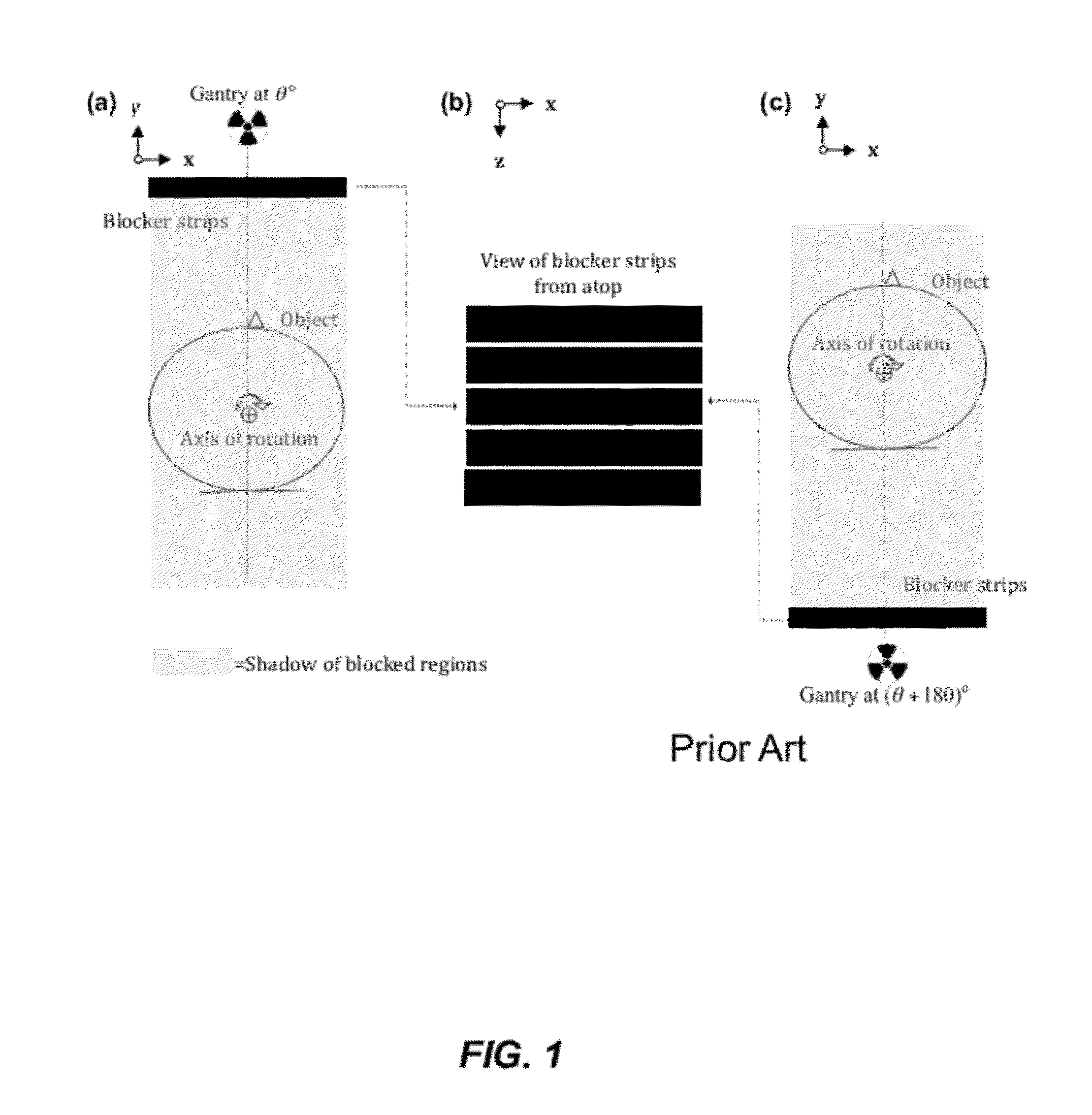Systems and Methods for Simultaneous Acquisition of Scatter and Image Projection Data in Computed Tomography
a computed tomography and image projection technology, applied in the field of computed tomography (ct), can solve the problems of significant degradation of tomographic image quality and accuracy, lack of complexity to deal accurately with heterogeneous objects (such as patients), and the efficacy of the technology so far has been limited
- Summary
- Abstract
- Description
- Claims
- Application Information
AI Technical Summary
Problems solved by technology
Method used
Image
Examples
Embodiment Construction
[0065]The current invention provides methods through which the scatter signal can be experimentally detected simultaneously while the projectional data is being acquired subsequently, where the detected scatter data can be used for scatter correction in the reconstruction. One embodiment of the invention provides a practical method to significantly improve tomographic imaging quality through the removal of scatter artifacts resulting in considerably increased contrast, fidelity, and CT number accuracy in tomographic reconstructions. The invention provides advancement to the field of medical x-ray CT in which CBCT systems, widely utilized for image guidance in radiotherapy, lack a practical method for accounting for scatter. Additionally, the invention is applicable to a multitude of tomographic imaging modalities such as diagnostic circular and helical CBCT, microCT, megavoltage CT, as well as tomographic imaging modalities utilizing a variety of different radiative sources and geom...
PUM
 Login to View More
Login to View More Abstract
Description
Claims
Application Information
 Login to View More
Login to View More - R&D
- Intellectual Property
- Life Sciences
- Materials
- Tech Scout
- Unparalleled Data Quality
- Higher Quality Content
- 60% Fewer Hallucinations
Browse by: Latest US Patents, China's latest patents, Technical Efficacy Thesaurus, Application Domain, Technology Topic, Popular Technical Reports.
© 2025 PatSnap. All rights reserved.Legal|Privacy policy|Modern Slavery Act Transparency Statement|Sitemap|About US| Contact US: help@patsnap.com



